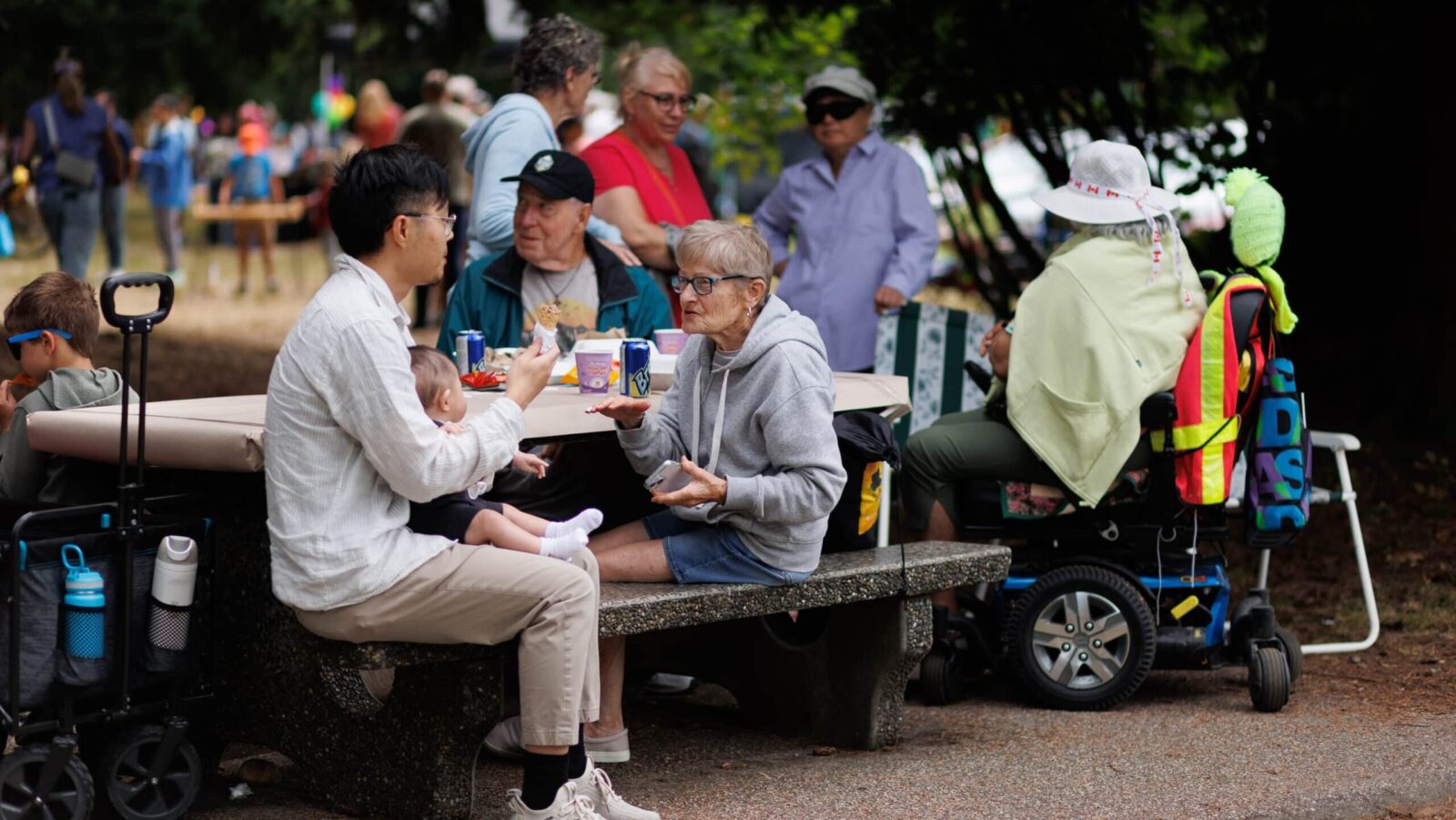
Living the Co-operative Way: Secure and Connected Living
Discover how co-op housing in B.C. offers secure and connected living that helps alleviate social isolation and rental stress.
The United Nations declared 2025 the International Year of Cooperatives, highlighting how member-owned enterprises build inclusive, resilient and sustainable communities. At the same time, British Columbia faces record‑high rents and a rise in urban loneliness. Housing co‑operatives sit at the crossroads of these twin challenges. They deliver permanent affordability while restoring the social fabric that many cities have lost. This installment in our Living the Co-operative Way series explores how co‑ops transform vulnerability—whether financial or emotional—into shared strength.
A Dual Challenge: Insecurity and Loneliness
Traditional rental housing set neighbours against one another for scarce, costly units and leave tenants at the mercy of relentless rent increases. Frequent moves, renovictions and escalating rents erode both stability and community. Housing co‑ops flip that script: residents co‑own the property, set the rules and share responsibility for its future. The result is predictable housing charges and a built‑in network of support creating secure and connected living for members.

Stuart Thomas, founding partner of Terra Social Purpose Real Estate and a founding member of Trafalgar Housing Co‑operative, captures the shift:
“Well, the whole thing about a community working together… is to counteract what I’ve come to describe as the atomization of modern—or post‑modern—society. If you move into a tower downtown that’s a housing co‑op, you find yourself with responsibilities, expectations and neighbours—some of whom become friends. You have far more agency over the place you live than if you move into the rental tower owned by an insurance company next door.”
Building Community One Decision at a Time
Because every member has a vote vote, housing co-op governance becomes a community‑building exercise. Committees develop budgets, plan playground upgrades, manage gardens and organise social events. Such acts build a culture of mutual aid: parents trade childcare, seniors share wisdom and newcomers find mentorship.
Elain Duvall, past executive director of Columbia Housing Advisory Association and former member of DeCosmos Housing Co‑operative, recalls:
“…a family who lived across the street from us. They came from a public housing project—their family had three sons who were probably between the ages of 12 and 18. I remember talking to the mom about a year after, and she said, ‘This co‑op saved my boys.’ They moved into a mixed‑income community where they saw examples of how people live, work and play together. Being in a secure, affordable place changed their lives.“
Affordability You Can Count On
Co‑ops keep housing charges tied to actual operating costs, not speculative profit. Surpluses are reinvested into reserves or member‑approved improvements, ensuring long‑term viability. Stable costs and secure tenure relieve the chronic stresses of unpredictable rent hikes and renovictions. This freeing co-op members to invest energy in themselves, their families, and their community.
Khush Singh, Staff Development Manager at COHO Management Services Society, observes:
“When your housing is secure and the people next door know your name, mental and financial stress both drop. That stability is transformative.”

That transformation is echoed by many co‑op members. Cassia Kantrow, president of CHF Canada, remembers how rent‑geared‑to‑income assistance supported her as a low‑income single mother. The subsidy allowed her to trade multiple jobs for part‑time work, return to school and be present for her son:
“I didn’t have to work full‑time; I could dedicate that time to parenting, go back to school and change my economic situation.”
Another example comes from David Lach at Quebec Manor Housing Co-operative. He remembers a member from about 30 years ago:
“She had a low-income job and had to move several times each year as rents increased, and the kid had changed schools several times. She was able to move in here. And the kid went to [a nearby] school. The kid attended the same school for three years [for the first time]. She went back to school for Library Science; she was a big reader anyway. And she came back with a library degree and found herself a job back in Nova Scotia, which is where she was from, driving a library bus… It’s the most wonderful job for her that you could ever have conceived of. And it only happened because she was able to find stable and affordable housing, so she could go back to school, because she wouldn’t have been able to do so otherwise. To me, that’s apocryphal. It’s a living example of what stable, affordable housing can do for people that they wouldn’t have been able to do otherwise. They could be scrabbling for the rest of their life, and the kid would be changing schools all the time, and nothing would have worked.”
These stories show how predictable, affordable housing enables members to focus on education, family and volunteering rather than mere survival. This strengthens both personal security and community resilience.
Housing co‑operatives prove that affordability and community are mutually reinforcing. By replacing passive tenancy with collective ownership and democratic processes, housing co‑ops turn isolated renters into invested members. In a province searching for both housing solutions and social cohesion, the co‑operative housing model offers a proven blueprint.
Your Turn – Share Your Story
Have you experienced the difference a housing co‑op can make? Send your story to yartibise@chf.bc.ca and help inspire a future where community and affordability go hand in hand.